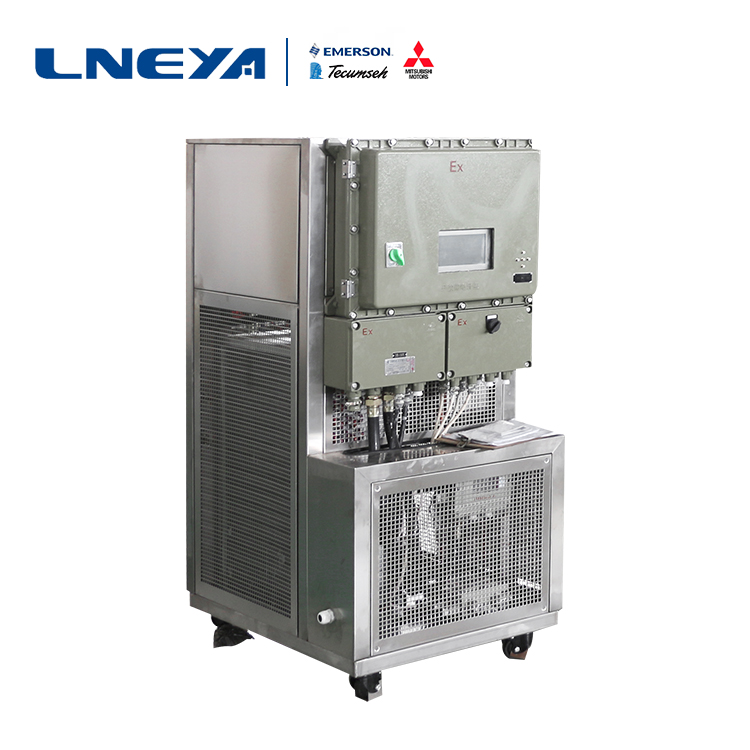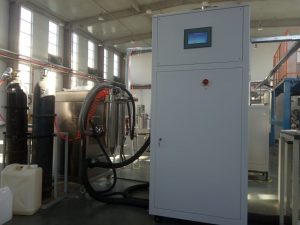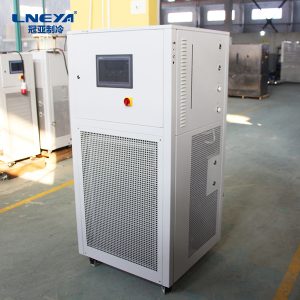Aumento della temperatura del bioreattore e apparecchiature di controllo della temperatura
A bioreactor is a reaction system in which a naturally occurring microorganism or a microorganism having a special degrading ability is inoculated into a liquid phase or a solid phase. The two reactors currently studied the most are “elevator type reactors” and “soil mud reactors”. The elevator type reactor provides the proper nutrients, carbon sources and oxygen through the flow of the aqueous phase to achieve the purpose of degrading pollutants in the soil. Compared to solid phase systems, bioreactors are capable of effectively degrading contaminants in less time.
Bioreactors sound strange, but the basic principles are quite simple. The stomach is a complex bioreactor that processes food inside the body. The food is digested by various enzymes in the stomach and becomes a nutrient that we can absorb. Bioengineering bioreactors are functions that mimic the function of living organisms in vitro and are designed to produce or test various chemical reaction devices. In other words, a bioreactor is a device system that uses a biological function of an enzyme or an organism (such as a microorganism) to perform a biochemical reaction in vitro, and is a biological function simulator such as a fermentor, an immobilized enzyme, or an immobilized cell. Reactor, etc. Then the problem of how to cool the bioreactor is generated.

Wuxi Guanya LNEYA refrigeration heating temperature control system adopts fully enclosed pipeline design, adopts high efficiency plate heat exchanger, and is applied to the temperature rise and temperature control of glass reactor, metal reaction kettle and bioreactor, especially suitable for reaction process. There is a need for heat and heat release process control.
Temperature process control principle (control reactor material temperature)
TCU temperature control unit schematic
1. The method of changing the control set value can respond to the system lag in the process as soon as possible, and obtain the minimum system overshoot. The control consists of two sets of PIDs (each set of PIDs are variable) control loops. These two sets of control loops are called: the primary loop and the slave loop, and the control loop of the master loop is used as the setpoint of the slave loop. The system adopts feedforward PV, and the output of the PID operation result of the main control loop is combined with the feedforward PV signal as the set value of the slave control loop, so that the temperature change gradient is controlled to ensure the temperature control accuracy of the system. (General anti-lag cascade control)
2. A specially designed lag predictor (no model self-built tree algorithm) generates a dynamic signal yc(t) instead of the process variable y(t) as a feedback signal. An e(t) signal is generated to the controller to cause the controller to predict that there is no large hysteresis in the control, so that the controller can always generate a suitable control signal. That is to say, even if there is a large hysteresis, the dynamic signal yc(t) can keep the feedback loop working normally. While the general PID is used to control the process with significant time lag, the controller output is not suitable due to the lag time. The feedback signal keeps growing, causing the system to overshoot and even out of control.
3. Through three-point sampling (material temperature point, temperature control system outlet temperature, temperature control system inlet temperature), through our company’s own model-free self-built tree algorithm and general anti-lag cascade algorithm.
Raccomandazioni correlate
-
Perché i refrigeratori di glicole etilenico possono essere utilizzati per le reazioni di polimerizzazione e accoppiamento
13321. Riscaldamento della polimerizzazioneGeneralmente, le materie prime della reazione di polimerizzazione sono alcuni solventi infiammabili, e il riscaldamento rapido può causare una temperatura locale troppo elevata e provocare incidenti. Ogni reazione di polimerizzazione ha il suo...
Visualizza dettagli -
Refrigeration heating and temperature control system of chemical reaction kettle
1462The reaction kettle cooling and heating temperature control system plays a certain role in the temperature control of various materials of reaction kettle, and its temperature control effect affects the results of reaction experiment. The stable o...
Visualizza dettagli -
What is the reason for non condensable gas in the condenser of ultra-low temperature cooling water c
2276When the ultra-low temperature cooling water chiller is running, it is necessary to pay attention to the gas state generated by the condenser under a certain temperature and pressure. The existence of these gases affects the operation of the ultra...
Visualizza dettagli -
Chip di controllo del riscaldamento a bassa temperatura e altri metodi di rilevamento
1726Con la ricerca e lo sviluppo della tecnologia dei chip, anche la tecnologia di rilevamento dei chip sta maturando. La tecnologia dei chip di controllo del riscaldamento a bassa temperatura di LNEYA viene applicata al rilevamento dei chip. Oltre a questo tipo di tecnologia di rilevamento, ci sono altri...
Visualizza dettagli
 Refrigeratori industriali LNEYA Produttore Fornitore
Refrigeratori industriali LNEYA Produttore Fornitore















